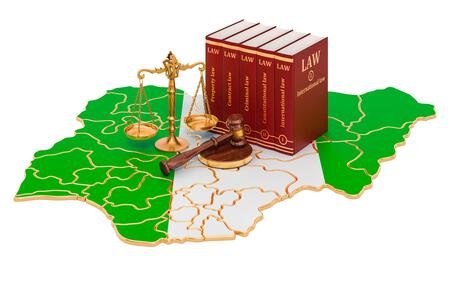Have you ever wondered how the Nigerian Constitution came to be? There is no such thing as law that exists in a vacuum. It must represent social values, behaviors, and conduct. Law influences all aspects of collective human life, whether directly or indirectly.
A society’s constitution is a very important feature. It is a country’s entire system of government, a set of rules that define, control, and govern the government. The value of a country’s Constitution cannot be overstated.
In Nigeria, the Constitution of the Federal Republic of Nigeria is supreme and binding on all citizens. It defines the functions of government, protects citizens’ human rights, and guarantees that no one violates the rules and regulations enshrined in it.
Here are a few different Types of Nigerian constitutions that will be briefly addressed
1. Written and Unwritten Constitution
The written Constitution is made up of documents that are organized into laws and is very structured and accurate. For instance, the United States of America, Russia, France, Germany, and Nigeria are all examples of country that has this type of Constitution.
The unwritten constitution on the other hand, is made up of a country’s different customs, beliefs, and practices that are not codified in a single text. It is not easily available, but it is very adaptable. The English Constitution is a classic example.
2. Flexible and Inflexible Constitution
A flexible constitution is one that can be easily revised, while an inflexible constitution is one that has entrenchments that make amending it very difficult. For example, the United States Constitution.
3. Monarchy and Republican Constitution
Monarchy is a peculiar constitutional structure that entails the practice of a head of state, with the Prime Minister wielding political power. Whereas the president, who serves as both the head of state and the head of government, is elected under the Republican Constitution.
4. Federal and Unitary Constitution
In Unitary Constitution, power is Concentrated at the centre although it can still provide for delegation of power to the Local level. The Federal Constitution allows for the sharing of power among the three branches of government as well as the creation of government at other levels (State and local)
5. Political and Legal Constitution
Political constitutions are based on the principle of majoritarianism and concern the group of citizens who hold political power in a society.They argue that legislation affecting the masses should be enacted by an elected majority. The legal constitution is under the jurisdiction of the judiciary, which has the power to modify or amend it.
6. Codified and Uncodified Constitution
This is another name for written and unwritten Constitution. Codified Constitution provides the institution to effect Constitutional changes, although such changes are not usually easy . But when we refer to uncodified Constitution, it is not enstrench in a documents which does not afford easy access.
7. Presidential and paliamentary Constitution
In our society today, it is the presidential system of government that is in operation. This entails the Democratic system of government where the head of government heads an executive branch which is quite distinct from the legislative branch. Here the head of government is also the head of State.
Its worthy to note that the Constitution of Nigeria is contained in a single document.
Sources of Constitution in Nigeria.
The Constitution of Nigeria derives it source from the following
- Judicial precedent (Rulings of the court in Nigeria)
- Opinions of political and constitutional Writers.
- Customs and Conventions and Constitutions of other Countries.
- Nigerian constitution
Interestingly, Constitutional development in Nigeria has been in place since 1914. The Colonial era span from 1914 to 1960. The first Constitution was enacted by an Order in council which was approved by the British colonial government when the country was administered as a Crown Colony during the Colonial administration. The following are a few of the constitutions passed during that era.They are listed here

- The 1913 Constitution. It which came into force in January 1914
- The Clifford Constitution (1922)
- The Richard Constitution (1946)
- The MacPherson Constitution (1951)
- The Lytyledon Constitution (1954). It solidified the federal concept and paved the way for the country’s independence.
Nigeria has a number of Constitutions that were adopted after the country achieved independence. They are the following
1. The 1960 (Independence) Constitution.
It was enacted by a British Order in council and it came into force on October 1,1960. Nigeria still retained Queen Elizabeth 11 as titular head of State.
2. The 1963 ( First Republican)Constitution
3. The 1979 (Second Republican) Constitution
4. The 1993 (Third Republican)Constitution
Note that the 1993 constitution, which called for the creation of a Third Republic and the restoration of democratic rule to Nigeria, was never completely enforced, and the military regained power until 1999.

5. The 1990 Constitution.
The current constitution was enacted on 29 May 1999, inaugurating the Nigerian Fourth Republic The 1993 constitution was intended to see the return of democratic rule to Nigeria with the establishment of a Third Republic, but was never fully implemented, and the military resumed power until 1999.
Nigeria’s democratic rule was restored in 1999 by the Fourth Republic’s constitution, which is still in effect today. President Olusegun Obasanjo signed two amendments to the 1999 constitution in January 2011, marking the first changes to the document since its inception in 1999.
Abbey Johnson has a Masters degree as an engineer and has over 3 years of teaching and research experience. He is happiest when on a bike and is also interested in electric energy and computer Science.

